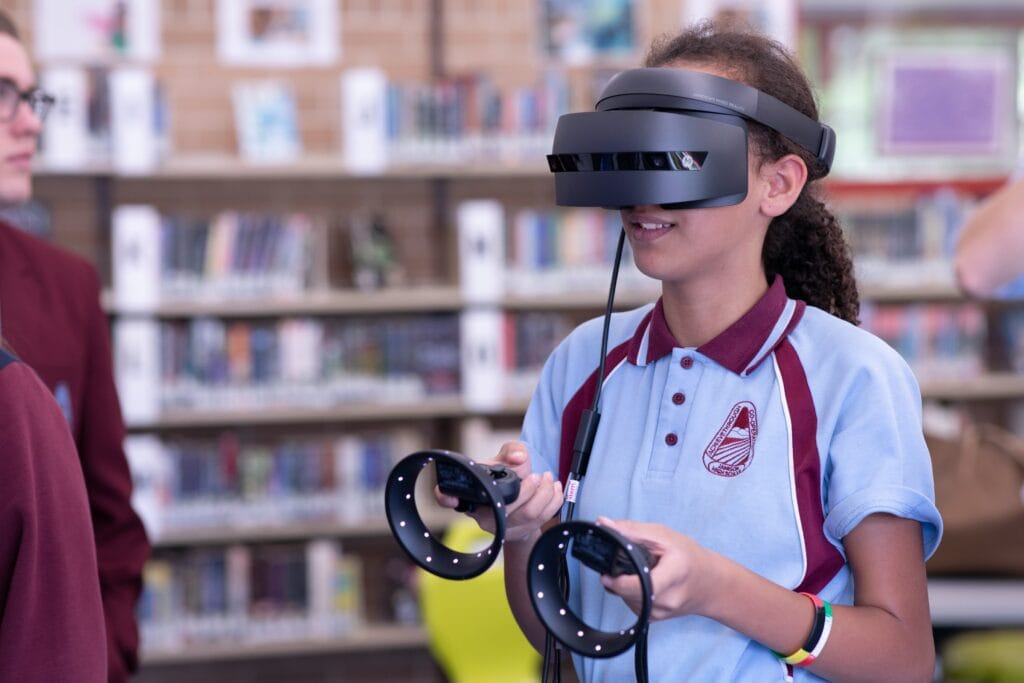Table of contents
- Online Learning – The Future of Education in a Connected World
- What Is Online Learning?
- Distance Education vs Online Learning – What’s the Difference?
- The Evolution of E-Learning
- Why Online Learning Matters
- How Online Classes Work
- Key Benefits of Online Education
- Courses and Programs You Can Take Online
- Online Learning for Schools and Institutions
- Challenges of Distance and Online Education
- The Future of Online Learning
- FAQ – Online Learning, Distance Education & E-Learning
Online Learning – The Future of Education in a Connected World
In a rapidly transforming world, online learning has become more than an alternative — it’s a global education revolution. From schools and universities to professionals and lifelong learners, the shift toward distance education and e-learning has redefined how knowledge is shared, accessed, and applied.
At Ostathi, our mission is to make high-quality education accessible instantly and intelligently. This article explores the evolution of online education, its benefits, challenges, and how it continues to shape the future of learning.
What Is Online Learning?
Online learning, also known as education online or digital learning, refers to structured learning that takes place via the internet. Learners connect with teachers through virtual classrooms, discussion boards, and online resources — anytime and anywhere.
Online learning lets you learn online through structured courses that mirror classroom outcomes while offering greater flexibility. In practical terms, learning online blends video lessons, interactive quizzes, discussion boards, and project work inside an education online platform. Well-designed online educational learning includes clear learning objectives, instructor feedback, and peer interaction so learners progress with confidence and accountability
It includes:
- Synchronous learning: real-time virtual classes.
- Asynchronous learning: pre-recorded or self-paced modules.
The development of e-learning began with computer-based training and has evolved into fully interactive, multimedia, and AI-supported systems. Today, learning online means freedom — freedom to study at your own pace, from any device, and in any place.
Distance Education vs Online Learning – What’s the Difference?
Understanding the Terms
The terms distance education and online learning are often used interchangeably, but they have subtle distinctions.
Many readers ask what is distance education and how it differs from online learning. Distance learning vs online learning is best understood by intent and medium: distance education is any instruction delivered when teacher and student are apart; online learning is the web-first subset. A related question is what is remote learning—typically an emergency or temporary mode that moves an existing course online without the full redesign online programs receive
| Aspect | Distance Education | Online Learning |
| Definition | Any learning where teacher and student are physically apart. | Internet-based courses designed for digital delivery. |
| Medium | May include printed materials, broadcasts, or mail. | Fully web-based: video, audio, LMS platforms. |
| Interaction | Limited or delayed feedback. | Real-time chat, video, and analytics. |
| Focus | Access and delivery. | Engagement and personalized learning. |
Both play vital roles in modern education, and at Ostathi, we bring the best of both together — flexibility and structure, accessibility and interactivity.
The Evolution of E-Learning
From early correspondence courses to interactive MOOCs and adaptive AI platforms, distance education and online learning have evolved through innovation.
Key Milestones in E-Learning
- Computer-Based Learning: the foundation of early e-learning systems.
- Multimedia Integration: videos, simulations, and gamified modules.
- Learning Management Systems (LMS): central hubs for assignments and grading.
- AI and Data Analytics: personalized pathways and predictive performance tracking.
The development of e-learning has moved from static slideware to online web-based learning that is social, data-driven, and mobile-first. Among the major e-learning pros are scalability, built-in analytics, and rapid content updates. Modern web learning environments support micro-lessons, badges, and mastery checks—features that make on-line learning effective for both short courses and full programs
Ostathi is part of the next wave — combining multilingual support, real-time translation, and interactive tutoring to redefine education online.
Why Online Learning Matters
Flexibility and Accessibility
The flexibility of online learning allows students to learn anytime, anywhere. Busy professionals, parents, or remote learners can access lessons without commuting or schedule conflicts
Flexible online learning means content adapts to the learner’s schedule and device. The flexibility of online education is especially valuable for working professionals and parents, who can progress in short, frequent sessions without sacrificing quality
Inclusivity and Reach
Distance education empowers learners in underserved regions. With platforms like Ostathi, students in Amman or Cairo can access the same quality of education as those in major global cities
Personalization and Analytics
Modern online learning systems use AI to adapt content based on performance and behavior — providing feedback in real time and enhancing outcomes.
Cost Efficiency
With no physical classrooms, education online courses are more affordable and scalable, ensuring broad participation without compromising quality
Resilience
During global disruptions, online and distance education ensured continuity of schooling. The digital shift is now permanent and strategic.
How Online Classes Work

Understanding how online classes work helps learners make the most of digital education:
- Access the Course Platform: Students log into an LMS or website like Ostathi.
- Attend or Watch Lessons: Classes can be live (synchronous) or recorded (asynchronous).
- Interact Digitally: Discussion boards, group work, and real-time Q&A.
- Complete Assessments: Quizzes and projects submitted online.
- Track Progress: Dashboards show grades, attendance, and engagement metrics.
How online learning works in practice
• Enrollment: browse programs, check prerequisites, and apply for online schooling through a short form.
• Orientation: new learners complete a tech check and course overview—this is how most online colleges onboard students.
• Weekly rhythm: watch lessons, join live sessions, contribute to forums, and submit projects.
• Support: tutors, office hours, and knowledge bases explain how online schools work day-to-day so learners never feel stuck.
• Assessment: quizzes, authentic projects, and proctored exams confirm mastery
If you’re wondering, “Are online classes easier?” — the answer depends on your learning style. They require independence, motivation, and time management, but offer unmatched flexibility.
Key Benefits of Online Education
- Learning without borders: reach courses worldwide.
- Diverse subjects: from academic programs to professional skills.
- Self-paced progress: learn according to your rhythm.
- Technology-driven: immersive simulations, chatbots, and AI tutors.
- Career relevance: continuous upskilling and reskilling.
At Ostathi, we integrate these benefits with instant AI support and human tutoring — merging the best of technology and pedagogy.
Courses and Programs You Can Take Online
From foundation skills to advanced certificates, there is a vast catalog of online educational courses. Learners can choose education online courses in languages, STEM, business, and digital skills, as well as short online class courses focused on employability. Universities now offer online ed courses that stack into micro-credentials or full degrees. For those pursuing distance education study, blended models combine distance education online learning with occasional in-person workshops, giving the best of both worlds
Online Learning for Schools and Institutions
For K-12 and TVET contexts, distance learning for schools succeeds when the online learning system supports curriculum mapping, attendance, and formative assessment. Effective e-learning for schools goes beyond video calls; it integrates interactive online education with projects, rubrics, and teacher dashboards so administrators can track outcomes by class and cohort
Distance learning for schools has redefined classroom boundaries. Institutions adopting e-learning for schools improve efficiency, student engagement, and inclusivity.
Benefits for Educators and Schools
Educators benefit through:
- Easier content delivery and updates.
- Performance analytics for every student.
- Collaboration across campuses and countries.
Ostathi partners with schools and ministries to enhance curriculum delivery, teacher training, and digital transformation. Learn more about Ostathi’s mission →
Challenges of Distance and Online Education
While online learning brings opportunity, it also presents challenges:
- Digital divide: Unequal internet access remains an obstacle.
- Engagement: Motivation can dip without in-person interaction.
- Assessment integrity: Ensuring fairness in exams online.
- Teacher readiness: Not all educators are trained for digital tools.
Learners’ remote learning experience varies by connectivity and course design. Capturing feedback about the learning online experience each term helps institutions improve pacing, interaction, and assessment integrity
To address this, Ostathi supports educators through guidance and platform training, ensuring that online schooling becomes more interactive, engaging, and effective
The Future of Online Learning

The next decade of distance education will focus on:
- AI-driven personalization — adaptive paths for every learner.
- Immersive classrooms using AR/VR for real-world simulations.
- Micro-credentials replacing traditional degrees.
- Global collaboration — students learning together across borders.
As technologies evolve, online education will move from being an alternative to becoming the foundation of lifelong learning.
Expect online education websites for students to unify discovery, enrollment, and support. In workforce development, online education training will align with industry badges, while in higher education universities will expand stackable degree pathways and recognition of prior learning
Ostathi’s platform embraces this vision by combining instant learning, AI tutors, and a community approach to make learning accessible to all.
FAQ – Online Learning, Distance Education & E-Learning
Online learning (education online) is instruction delivered over the internet using video lessons, discussions, quizzes, and projects inside a learning platform
Distance education means teacher and student are separated by location. It can be fully web-based (distance education online learning) or blended with occasional in-person workshops.
Distance learning is the broader category; online learning is the web-first subset designed for digital delivery with interactive tools and analytics
They’re often used interchangeably. Online education usually emphasizes internet delivery and platform features; distance education can include non-web formats
Remote learning typically moves an existing class online temporarily (e.g., during disruptions) without the full redesign used in dedicated online programs
Not necessarily. They’re more flexible, but success still requires time management, participation, and consistent study habits
Learners join live sessions or watch recordings, participate in forums, submit assignments digitally, and track progress in an online learning system
Colleges use an LMS for lectures, readings, labs/simulations, and grading. Orientation explains technology, academic integrity, and support services
Choose a program, check online schooling requirements, submit your application, complete tech/orientation checks, and follow a weekly schedule of lessons and assessments
A structured model where a school delivers the full curriculum online, including teaching, assessment, attendance, and guidance counseling
Instructor-led or self-paced online educational courses delivered through an LMS with videos, readings, interactive activities, and graded projects
Pros: flexibility, wider course choice, lower costs, measurable outcomes
Cons: potential isolation, self-discipline required, bandwidth/device needs
Look for platforms with reliable video, forums, mobile apps, interactive online education, analytics, and integrations (calendar, proctoring).
Digital or online web-based learning uses internet tools—LMS, apps, multimedia—to enable anywhere/anytime study on laptop, tablet, or phone
From language and STEM to business and vocational skills, there are thousands of learning programs online and university online ed courses
Choose accredited providers, check learner reviews, confirm assessment policies, and review privacy/security for your data
Through clear outcomes, aligned assessments, instructor presence, analytics, and external accreditation or recognition
Accessible design, mobile support, discussion tools, quizzes/projects, plagiarism checks, gradebook, and reporting for learners and educators
Set a weekly study routine, use checklists, engage in forums, and book tutor/office-hour time. Short, frequent sessions beat long, infrequent ones
More personalization (AI), immersive tools (AR/VR), and stackable micro-credentials across higher education and workforce training



